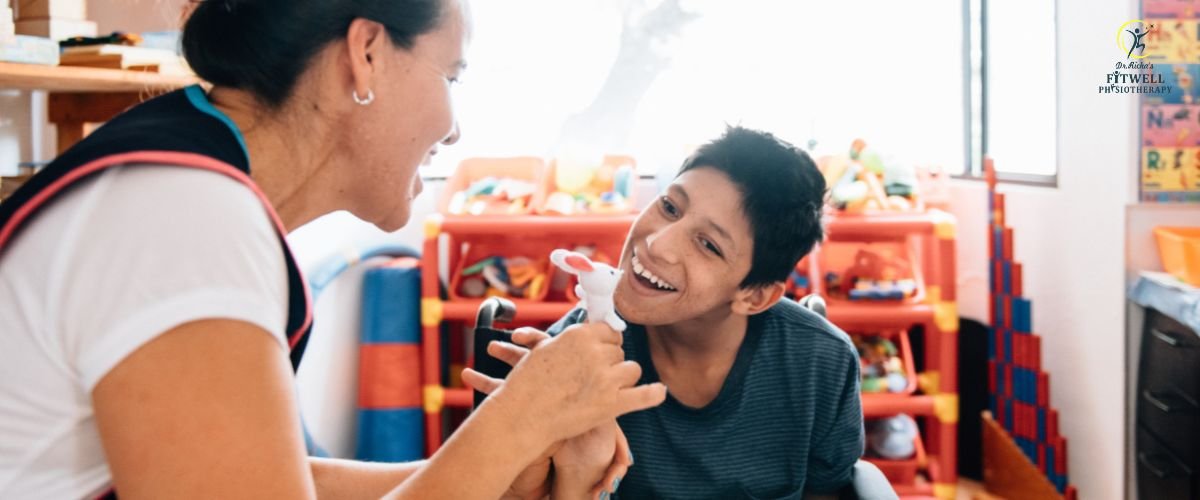- Fitwell Physiotherapy
Bell’s Palsy

Bell’s Palsy is a condition characterized by the sudden onset of weakness or paralysis in the muscles on one side of the face. Named after the Scottish anatomist Charles Bell, who first described it in the 19th century, Bell’s Palsy can be alarming but is usually temporary and rarely causes long-term complications. Here’s a breakdown of its symptoms, causes, when to seek physiotherapy, risks, prevention, and treatments:
Please submit your details below.
Symptoms:
- Facial weakness or paralysis: Difficulty in making facial expressions, such as smiling or closing the eye on one side.
- Drooping of the face: One side of the face may appear droopy or asymmetrical.
- Difficulty in closing one eye: This can lead to dryness and irritation of the eye on the affected side.
- Changes in taste: Some people may experience changes in taste sensation, particularly on the front part of the tongue.
- Increased sensitivity to sound: Sounds may seem louder in one ear than the other.
Causes:
The exact cause of Bell’s Palsy is not fully understood, but it is believed to be due to inflammation or compression of the facial nerve, which controls the muscles of the face. Factors that may contribute to the development of Bell’s Palsy include:
- Viral infections: Herpes simplex virus (HSV), which causes cold sores, is often implicated.
- Immune system response: The body’s immune response to viral infections may lead to inflammation and nerve damage.
- Genetics: There may be a genetic predisposition to developing Bell’s Palsy.
When to See a Physiotherapist:
It’s essential to seek medical attention if you experience sudden onset facial weakness or paralysis, as early intervention can improve outcomes. Physiotherapists can play a crucial role in the management of Bell’s Palsy by:
- Facilitating facial muscle retraining: Physiotherapy exercises can help strengthen and retrain the affected facial muscles.
- Providing supportive therapy: Techniques such as massage and electrical stimulation can promote muscle recovery and reduce discomfort.
- Preventing complications: Physiotherapists can help prevent complications such as contractures and muscle atrophy by providing appropriate interventions.
Risks:
While Bell’s Palsy typically resolves on its own within a few weeks to months, there are some risks associated with the condition, including:
- Incomplete recovery: Some individuals may experience persistent weakness or facial asymmetry even after the acute phase has passed.
- Recurrence: Bell’s Palsy can recur in some cases, particularly in individuals with certain risk factors or underlying conditions.
- Psychosocial impact: Facial paralysis can have a significant psychosocial impact, affecting self-esteem and quality of life.
Prevention:
Since the exact cause of Bell’s Palsy is unknown, it’s challenging to prevent. However, some strategies may help reduce the risk or severity of the condition:
- Maintain good overall health: Adopting a healthy lifestyle, including regular exercise, balanced diet, and stress management, may help support immune function and reduce the risk of viral infections.
- Practice good hygiene: Practicing good hygiene, such as washing hands frequently and avoiding close contact with individuals who have active infections, may help prevent the spread of viruses associated with Bell’s Palsy.
Treatments:
Treatment for Bell’s Palsy aims to relieve symptoms, promote recovery, and prevent complications. Common treatment options include:
- Corticosteroids: Oral corticosteroids, such as prednisone, are often prescribed to reduce inflammation and swelling of the facial nerve.
- Antiviral medications: In some cases, antiviral medications may be prescribed, particularly if there is evidence of viral infection.
- Eye protection: Since Bell’s Palsy can affect the ability to close the eye properly, eye protection measures such as artificial tears and eye patches may be recommended to prevent corneal damage.
- Physiotherapy: Physiotherapy plays a crucial role in the management of Bell’s Palsy, helping to restore facial muscle function and prevent complications.
- Surgical interventions: In rare cases where Bell’s Palsy does not improve with conservative treatment, surgical interventions such as facial nerve decompression may be considered.
In conclusion, Bell’s Palsy is a temporary condition characterized by facial weakness or paralysis, usually caused by inflammation or compression of the facial nerve. While the exact cause is unknown, early intervention and appropriate treatment, including physiotherapy, can help promote recovery and prevent complications.
Frequently Asked Questions
Bell’s Palsy is a condition characterized by sudden weakness or paralysis of the muscles on one side of the face, leading to drooping of the affected side. While the exact cause is not fully understood, it is believed to be due to inflammation or viral infection, often affecting the facial nerve (cranial nerve VII).
Diagnosis of Bell’s Palsy is primarily based on symptoms and a physical examination by a healthcare professional. Imaging tests such as MRI or CT scans may be ordered to rule out other potential causes of facial paralysis, such as stroke or tumor.
Common symptoms include sudden onset of facial weakness or paralysis on one side, drooping of the mouth or eyelid, difficulty closing one eye, drooling, loss of taste, and altered sensation on the affected side of the face.
In most cases, Bell’s Palsy is temporary and resolves on its own within a few weeks to months. However, in some individuals, residual weakness or facial asymmetry may persist even after recovery. Rarely, some may experience recurrent episodes of Bell’s Palsy.
Treatment options for Bell’s Palsy may include medications such as corticosteroids to reduce inflammation, antiviral drugs if a viral cause is suspected, and physical therapy to maintain muscle tone and improve facial function. Additionally, protective measures such as eye drops or eye patches may be recommended to prevent corneal damage due to impaired eye closure.
Related Conditions
How Fitwell Physiotherapy Can Help?
Dr. Richa’s Fitwell physiotherapy has an extensive team of physiotherapists all within their own specialist areas of physiotherapy. Whatever your condition, we guarantee that we will have the best physiotherapist for you. We assess, diagnose, plan, cure and care for you.
Fitwell Physiotherapy Clinic, Pune provides you best physiotherapy treatment in Kharadi, pune. We also serve Chandan Nagar, Vadgaon Sheri, Keshav Nagar, Wagholi & nearby Areas in Pune. We are experts in treating Neck Pain, Hand Pain, Back Pain, Lower Back Pain, Knee Pain, Stiff Neck, Sciatica, Arthritis, Stroke Paralysis & Post Surgical Rehab.
We provide Specialized physiotherapy treatments in Sports Injuries, Pre and post Surgery, Neurologic, Pediatric, Chronic Pain/Fatigue, Rheumatology, Women’s Health, Men’s Health, Ergonomics, Vestibular, Amputees & all sort of Pain treatment and lifestyle conditions.

































































































